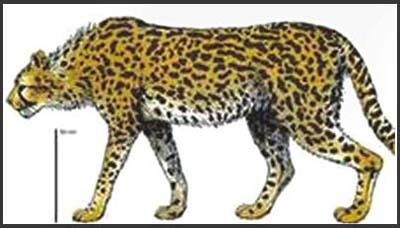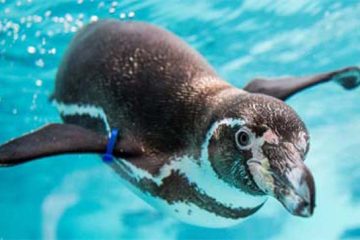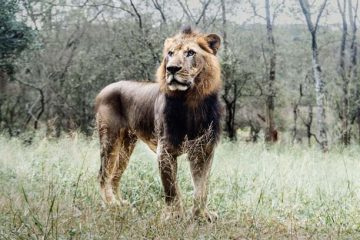Supercheetah
The Jurassic cheetah
Obaidur Rahman
 Paleontologist from Senckenberg Research Institute, Weimar, Germany, recently unearthed the remains of a cheetah which might just have been the bloodiest killers of the ancient times wandering at one of the oldest known habitat of human beings. It is well known that the only remaining species of cheetah, Acinonyx jubatus, is the fasted animal on Earth with the capability of running up to 70 mile-per-hour. But the recent finding concludes, based on the fossil remains of arm and paw bones that this new resolutely build cheetah, Acinonyx pardinensis, weighing about 220 pounds, was much more powerful than its present day descendants.
Paleontologist from Senckenberg Research Institute, Weimar, Germany, recently unearthed the remains of a cheetah which might just have been the bloodiest killers of the ancient times wandering at one of the oldest known habitat of human beings. It is well known that the only remaining species of cheetah, Acinonyx jubatus, is the fasted animal on Earth with the capability of running up to 70 mile-per-hour. But the recent finding concludes, based on the fossil remains of arm and paw bones that this new resolutely build cheetah, Acinonyx pardinensis, weighing about 220 pounds, was much more powerful than its present day descendants.
The scientists discovered the fossils at a 1.8 million year old site at Dmanisi in the Republic of Georgia which is also known as one of the oldest known sites for ancient human species out of Africa. This particular site is quite a potent spot for the paleontologists as previously, researchers discovered fossils of a dirk-toothed cat (Megantereon cultridens) and a similar scimitar cat (Homotherium crenatidens) in the area. However, the oldest known cheetah fossil ever to be discovered did not come from Africa, but from China, where the skull of Acinonyx kurteni was found which used to roam the land about 2.2 to 2.5 million years ago.
The locale where the fossil was discovered is believed that once it was a forested valley floor whose edges blurred into savanna and grasslands, the kind of open ground needed for cheetahs to run down prey. And it is likely that the extinct predator preyed on antelope- to horse-size game, probably hunting as a sprinter and suffocating victims by clenching their jaws around the preys’ throats. And killing preys certainly came easy for Jurassic giant, with a size of about 200 centimeters (79 inch) from head to rump, not including a 140 centimeters (55 in) tail with a reconstructed shoulder height at 90 centimeters (35 inch). It was a specialized sprinter with long limbs just like the modern cheetah and a back that is slightly longer and highly flexible which allowed great propulsion during a sprint. Just as with the modern cheetah, experts believe that almost every aspect of Acinonyx pardinensis is specialized for running.
Based on all the findings, details of which was published in the July 27 issue of the online edition of the Quaternary Science Reviews journal, the researchers believe that this extinct cheetah probably thrived as a killer, with each cat downing an estimated 16,500 lbs. (7,500 kg) of prey a year, more than any other predator within its community. It is also supposed that this massive bounty of meat would have helped provide others with plenty of leftovers.
-(Article originally published on The Daily Star)
The contributor is a freelance science writer



